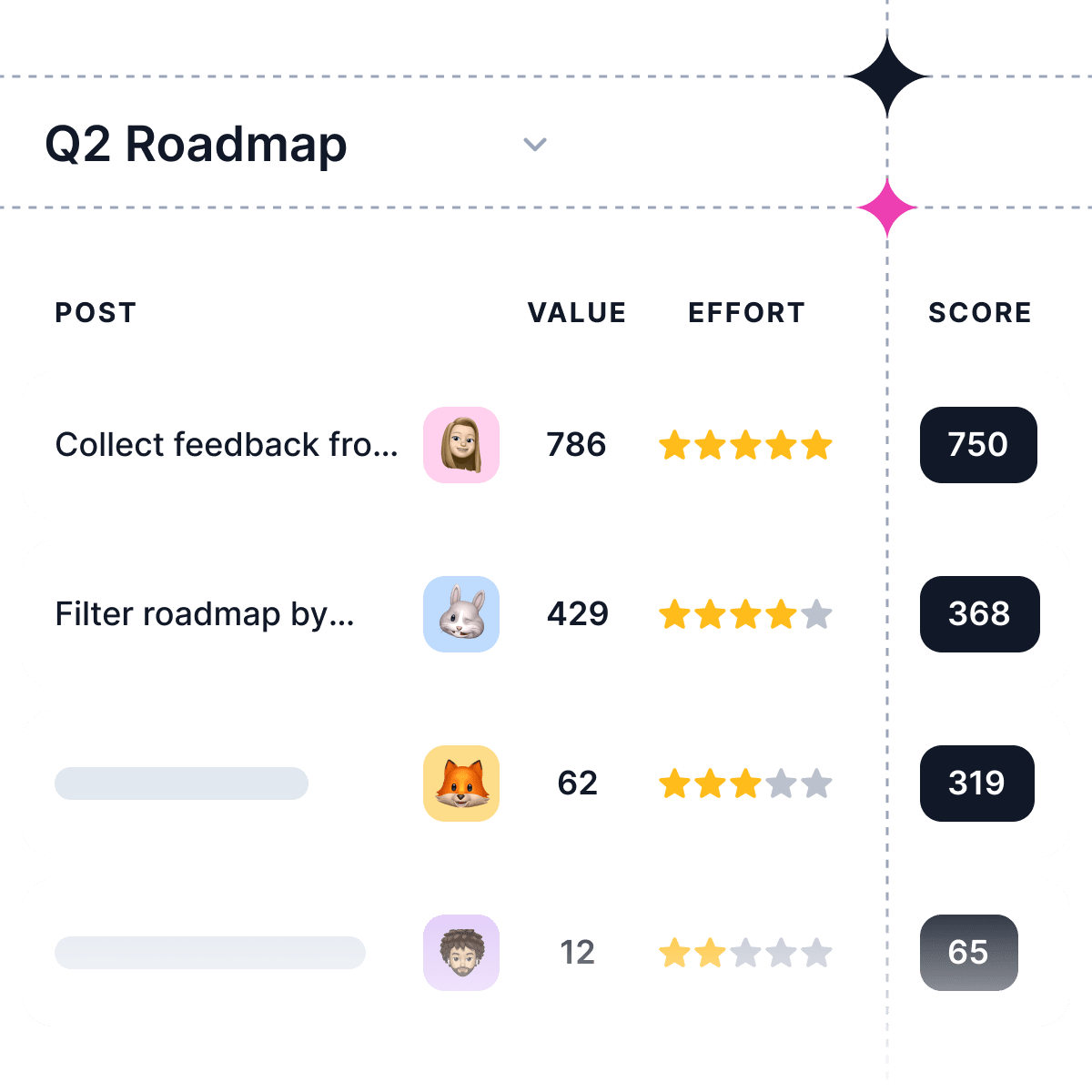Cross-functional teams have become a staple in many organizations as they strive to foster collaboration and innovation. In this blog, we'll explore what cross-functional teams are, the different types of teams, their key components, benefits, challenges, and the role of effective communication in their success.
What is a Cross-Functional Team?
A cross-functional team is a group of individuals with diverse backgrounds, skills, and expertise who come together to collaborate on a specific project, goal, or objective. Unlike traditional teams that consist of members from the same department or function, cross-functional teams include individuals from different areas of specialization or departments within an organization.
Cross-functional teams bring together people with different skills and knowledge to work on projects. They help solve problems by looking at them from many angles, which leads to new ideas and better decisions.
These teams are great for complex projects that need input from different areas like product development, planning, or solving tough business problems. They help people from different departments work together and break down barriers.
Usually, cross-functional teams have members from areas like marketing, engineering, finance, and customer support. The team is built based on the project's needs to have the right expertise.
To make these teams work well, there should be open communication, trust, and respect. Strong leadership, clear goals, and a supportive work environment are also important for success.
What are examples of cross-functional teams?
There are several examples of cross-functional teams, each with its unique purpose and structure. Some common examples of cross-functional teams include:
-
Problem-Solving Teams: These are teams that are brought together to address a particular business problem or challenge. They may be composed of individuals with different expertise, such as marketing, technology, and operations, who collaborate to find solutions and make recommendations.
-
Project Teams: These are teams that work together to complete a specific project or initiative. They may be formed to design a new product, launch a marketing campaign, or develop a new process. Project teams are usually temporary and disband once the project is completed.
-
Process Improvement Teams: These teams focus on analyzing and improving existing business processes to increase efficiency, reduce waste, and improve quality. They may include members from various departments that are involved in the process and work together to identify bottlenecks, and areas for improvement, and implement changes.
-
Product Development Teams: These teams are responsible for bringing new products to market. They may include individuals with expertise in research and development, design, engineering, marketing, and supply chain. Product development teams work together to define product requirements, design and test prototypes, and launch the product.
-
Employee Task Forces: These are teams composed of employees from different departments and levels of an organization who work together to address a specific issue or concern. Employee task forces may focus on improving employee engagement, diversity and inclusion, or safety, among others.
These examples show the diversity of cross-functional teams and how they are tailored to meet specific objectives within different contexts and industries. The composition of these teams may vary depending on the organization, project requirements, and goals.
What are the benefits of cross-functional teams?
There are numerous benefits to working in cross-functional teams, some of which include:
-
Enhanced Problem-Solving: By bringing together individuals from different functions and backgrounds, cross-functional teams provide diverse perspectives and expertise. This diversity helps generate innovative ideas, enhances problem-solving capabilities, and leads to better decision-making.
-
Improved Communication and Collaboration: Cross-functional teams foster better communication and collaboration among team members. By working together towards a common goal, team members develop a deeper understanding of each other's roles, build strong relationships, and break down silos within the organization.
-
Increased Efficiency and Productivity: Collaborating across functions eliminates the need for multiple handoffs and reduces bureaucratic delays. Cross-functional teams enable faster decision-making, streamlined processes, and efficient utilization of resources, resulting in increased productivity.
-
Enhanced Creativity and Innovation: The diverse skill sets and perspectives brought by team members from different functions enable cross-pollination of ideas. This encourages creativity, fosters innovation, and helps identify novel solutions to complex problems.
-
Better Employee Engagement and Satisfaction: Working in cross-functional teams provides employees with more opportunities for growth, learning, and professional development. Employees feel empowered and valued as their unique skills and expertise are recognized and utilized. This leads to higher employee engagement and job satisfaction.
-
Heightened Accountability and Ownership: Cross-functional teams encourage individual team members to take ownership of their responsibilities and contribute to the team's success. This shared accountability promotes a sense of commitment and dedication among team members.
-
Smoother Implementation of Projects: By involving representatives from different functions right from the planning stage, cross-functional teams ensure that all aspects of a project are considered and integrated. This results in a more comprehensive and well-rounded implementation, reducing the risk of oversights or gaps.
Challenges and Potential Pitfalls of Cross-Functional Team Collaboration
Despite their many benefits, cross-functional teams are not without challenges. Some common challenges that may arise when working with cross-functional teams include:
-
Conflicting priorities: Team members from different departments may have competing goals and objectives, leading to disagreements and delays in project execution. This can make it difficult for the team to stay focused and aligned on the overall project goals.
-
Lack of trust: Trust can be harder to establish in cross-functional teams, especially if members have not worked together before or come from departments with a history of rivalry. A lack of trust can hinder open communication and collaboration, ultimately impacting the team's performance.
-
Unclear roles and responsibilities: Without clearly defined roles, team members may struggle to understand their responsibilities and how they contribute to the team's success. This can lead to confusion, duplication of effort, and frustration among team members.
-
Communication barriers: Cross-functional teams often involve individuals from different departments, backgrounds, and areas of expertise. This diversity can lead to communication challenges, as team members may use different jargon, have varying expectations, or approach problems differently.
How to overcome the challenges of Cross-Functional Team collaboration?
To overcome these challenges and maximize cross-functional team effectiveness, organizations can:
-
Establish clear objectives and ensure all team members understand their roles and responsibilities. This will help to align the team's efforts and create a shared understanding of the project's goals.
-
Foster a culture of trust and open communication, enabling team members to share ideas, concerns, and feedback openly. Encourage active listening and empathy, and ensure that everyone's perspectives are valued and considered.
-
Encourage collaboration and knowledge sharing between departments, even when a cross-functional team is not in place. This can help to break down silos, build relationships, and create a more cohesive and effective organization.
-
Provide training and resources to help team members develop the necessary skills and competencies for effective cross-functional collaboration. This can include workshops on communication, conflict resolution, and problem-solving, as well as opportunities for team-building and networking.
-
Regularly review and evaluate the performance of cross-functional teams, identifying areas for improvement and celebrating successes. This can help to continuously refine processes and ensure that cross-functional collaboration remains a valuable and effective approach for your organization.
Are cross-functional teams usually permanent or temporary?
Cross-functional teams can be either permanent or temporary depending on their purpose and the organization's structure. Here are a few examples of both:
-
Permanent cross-functional teams: Some organizations have permanent cross-functional teams which work on an ongoing basis. These teams may cover broad organizational functions, such as a team focused on customer experience improvement, innovation, or process excellence. The team members are dedicated to the team's goals and work collaboratively to achieve them.
-
Temporary cross-functional teams: Most commonly, cross-functional teams are formed for a specific project or initiative. Once the project or initiative is complete, the team is disbanded. These temporary teams may include individuals from different departments, functions, or areas of specialty brought together to solve a specific problem or achieve a specific goal. These teams work together for a limited time, usually until the project is completed, and then they either dissolve or are reconfigured for a new task.
In both cases, the success of cross-functional teams depends on effective communication, collaboration, and alignment to achieve the team's goals. A permanent cross-functional team requires ongoing management to keep the team motivated and working toward its goals, while a temporary cross-functional team requires clear project parameters, well-defined milestones, and deadlines to energize the team toward achieving its objectives.
How to build a successful cross-functional team?
Building a successful cross-functional team requires careful planning and implementation. Here are some steps you can follow:
-
Clarify goals and objectives: Clearly define the goals and objectives of the cross-functional team. Make sure each team member understands the purpose of the team and what is expected from them.
-
Identify the right team members: Select individuals from different departments who have the necessary skills, expertise, and willingness to collaborate. Look for diversity in knowledge, perspectives, and experience to bring different insights to the team.
-
Establish clear roles and responsibilities: Clearly define the roles and responsibilities of each team member. Set expectations for what each member will contribute to the team and how they will collaborate with others.
-
Promote open communication: Create an environment that encourages open and transparent communication among team members. Establish communication channels and platforms where team members can share information, ideas, and updates regularly.
-
Foster trust and collaboration: Build trust among team members by promoting a culture of respect, openness, and active listening. Encourage collaboration and the sharing of ideas and perspectives without fear of judgment.
-
Provide necessary resources and support: Ensure that the team has the necessary resources, tools, and support to accomplish their goals. Address any potential barriers or limitations that may hinder the team's success.
-
Encourage cross-functional learning: Create opportunities for team members to learn from each other and gain insights into different functions. This can be done through cross-training, workshops, or knowledge-sharing sessions.
-
Establish accountability: Set clear expectations for accountability and performance. Hold each team member responsible for their contributions and ensure that everyone understands the team's collective responsibility for achieving the desired outcomes.
-
Manage conflicts effectively: Anticipate and address potential conflicts that may arise due to different perspectives or interests. Encourage open discussions and provide a process for constructively resolving conflicts.
-
Celebrate achievements and provide feedback: Recognize and celebrate the team's achievements to boost morale and motivation. Provide regular feedback to help team members improve and grow.
Remember that building a successful cross-functional team is an ongoing process that requires continuous effort, support, and adaptation to ensure effective collaboration and achieve the desired outcomes.
The Role of Effective Communication in Cross-Functional Team Success
Effective communication is critical to the success of cross-functional teams. It enables team members to share ideas, collaborate on problem-solving, and build trust. To facilitate effective communication, organizations can:
-
Provide tools and platforms that enable easy collaboration and information sharing, such as project management software and communication channels.
-
Encourage regular team meetings and updates to keep all team members informed and engaged.
-
Implement training programs and workshops to help employees develop strong communication skills.
In conclusion, cross-functional teams offer significant benefits for organizations looking to improve innovation, communication, and collaboration. By understanding the different types of teams, and their key components, and addressing potential challenges, organizations can effectively leverage cross-functional teams to achieve their strategic goals.


